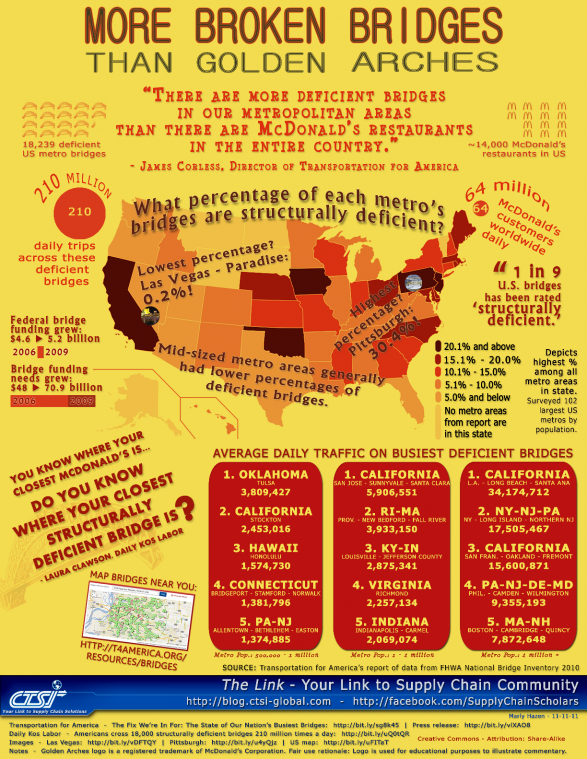Job Alert: Director of Electronic Toll Collection – MTA Bridges and Tunnels – New York, NY
| Control Code: | P999U/R920 | ||
| Resume Due Date: | August 12, 2011 | ||
| Job Title: | Director of Electronic Toll Collection | ||
| Department/Division: | Tolling Initiatives | ||
| Work Location: | 2 Broadway, New York, NY | ||
| Earnings Potential : | Commensurate with salary history and experience | (Actual salary offers are made subject to the salary administration policy and are made considering a number of factors including, but not limited to, the selected candidate’s salary and work history.) | |
| Hay Points: | 800 | ||
| Overtime Eligibility: | Not eligible for paid overtime in accordance with FLSA | ||
Job Description:
Manages the planning, engineering, design, acquisition and installation of state of the art electronic toll collection technologies and systems, including research and testing; manage consultants and contractors as necessary; administer capital projects budgets; work collaboratively with all functional areas to address operational, customer service and other needs; reports to the Senior Director of New Toll Initiatives.
Specialized Knowledge:
At least 10 years experience working in the toll industry at a level that has included detailed technical knowledge of state of the art toll collection technologies and systems obtained through a technical degree and in field experience, experience with systems engineering through classroom work or practical application on multiple projects and extensive project management skills. Excellent communicatons skills and ability to work as part of a team
Education:
Undergraduate technical degree, master’s degree preferred
How to Apply
To be considered for this vacancy, follow these four easy steps:
1 – Place the Control Code found below in the upper right hand corner of your resume.
2 – Ensure that this office receives your resume by the Due Date provided above.
3 – Make sure that your resume includes a chronological work history.
4 – Send your resume to this address:
Americans Agree: Smart Growth Approach to Transportation Helps Build Communities
(Source: MSNBC)
An overwhelming majority of Americans believe restoring existing roads and bridges and expanding transportation options should take precedence over building new roads, according to a survey sponsored by the National Association of Realtors® and Transportation for America.
The 2009 Growth and Transportation Surveydescribes what Americans think about how their communities are handling development and how the transportation needs of communities can best be met.
“Realtors® build communities and know how important an organized transportation structure is in supporting neighborhood growth,” said NAR President Charles McMillan, a broker with Coldwell Banker Residential Brokerage in Dallas-Fort Worth. “A well planned investment in transportation will help create more livable and vibrant communities.”
To accommodate future U.S. population growth, which is expected to increase by 100 million by 2050, Americans favor improving intercity rail and transit, walking and biking over building new highways. When asked what the federal government’s top priority should be for 2009 transportation funding, half of all respondents recommended maintaining and repairing roads and bridges, while nearly one third said “expanding and improving bus, rail, and other public transportation.” Only 16 percent said “expanding and improving roads, highways, freeways and bridges.”
Moving America: Transport Infrastructure at a Crossroads
(Source: Backgrounder, Council on Foreign Relations)
| Author: |
Robert McMahon, Deputy Editor
|
|---|
Introduction :
Transportation experts view the call for dramatic federal government action in response to the economic crisis as an opportunity to overhaul the U.S. system of highways, bridges, railways, and mass transit. A series of sobering report cards from the American Society of Civil Engineers documents the inadequacy of this system. President Barack Obama took office pledging to act; his February 2009 stimulus package provides nearly $50 billion for transportation infrastructure. But many experts look beyond the stimulus and call for shifts in longer-term policy that will fundamentally alter the approach to planning and funding infrastructure and bolster U.S. competitiveness, quality of life, and security. In the past, the United States has revamped its transportationinfrastructure to build canals, transcontinental railways, and a federal highway system, in each case helping usher in periods of economic growth.
A State of Disrepair
A January 2009 report by the American Society of Civil Engineers on infrastructure, much of it involving the transportation sector, concluded: “all signs point to an infrastructure that is poorly maintained, unable to meet current and future demands, and in some cases, unsafe.” It found that aviation, transit, and roads, already rated abysmal four years ago, had declined even further. Lost time from road congestion, the report estimated, was costing the economy more than $78 billion dollars a year while nearly half of U.S. households still had no access to bus or rail transit.
Click here to read the entire article.


